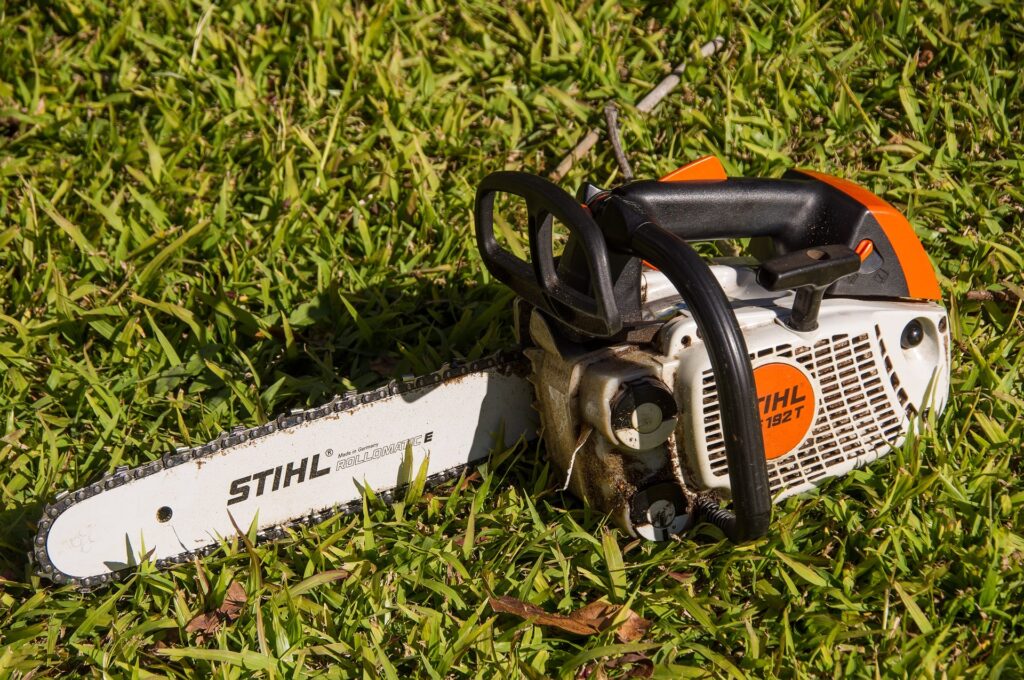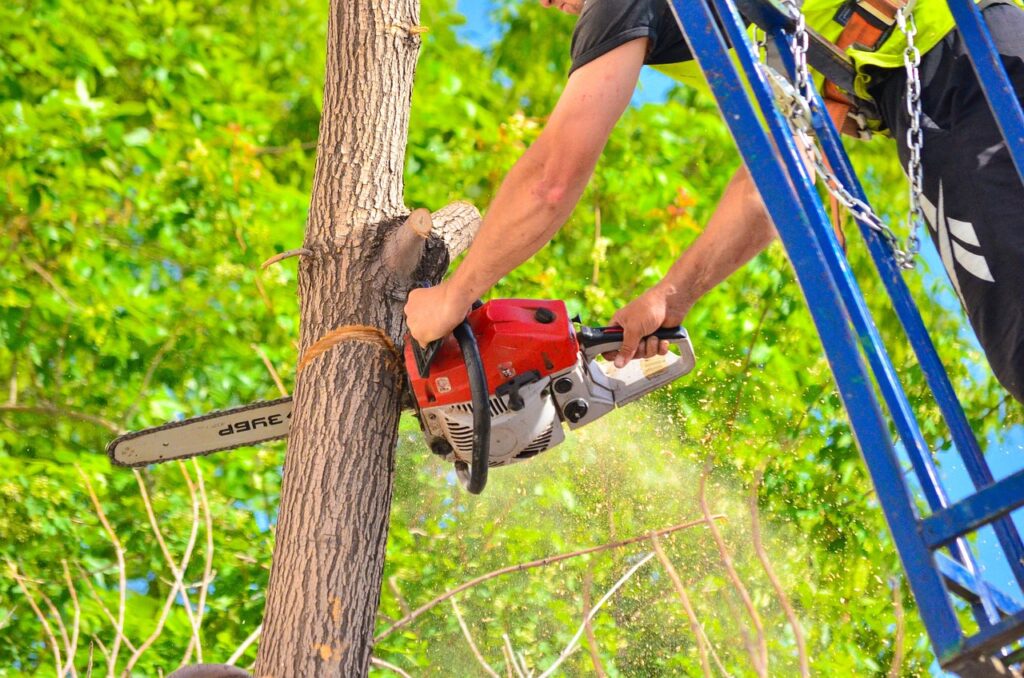
In this guide, we’ll break down why your mo39 Stihl gas leaks when tilted, the most common causes, and the practical fixes you can do at home to get your machine running safely again.
If you’ve ever set your Stihl mo39 chainsaw or trimmer on its side and noticed gasoline dripping out, you know how frustrating—and concerning—it can be. A leaking tool doesn’t just waste fuel; it can create real safety hazards, shorten the life of your machine, and make even the simplest yard job a messy ordeal.
I still remember the first time it happened to me. I had just finished trimming and leaned my Stihl against the shed wall. Minutes later, the smell of fuel hit me, and sure enough, there was a small puddle forming on the floor. That was the moment I realized this wasn’t just a small nuisance—it was something I needed to fix fast.
Why You Can’t Ignore a Gas Leak
Gas leaks aren’t just an inconvenience—they’re dangerous. Here’s why:
- Fire Risk – Gasoline is highly flammable. A single spark or hot surface can turn a leak into a disaster.
- Health Concerns – Breathing in fumes over time can cause headaches, dizziness, and nausea.
- Environmental Damage – Fuel runoff contaminates soil and water.
- Machine Damage – A small leak today can mean expensive repairs tomorrow if the carburetor or engine is affected.
So if your mo39 is dripping gas when tilted, don’t shrug it off. It’s a problem that demands quick attention.
How the Fuel System Works
To understand why leaks happen, let’s look at the Stihl mo39’s fuel setup. It’s a simple but sensitive system:
- Fuel Tank – Holds the gasoline.
- Fuel Line – Carries gas to the carburetor.
- Carburetor – Mixes gas and air before combustion.
- Tank Vent – Keeps pressure balanced.
- Seals & Grommets – Prevent leaks at connection points.
When the tool is tilted, fuel shifts inside the tank and lines. If there’s even a tiny weakness in the system, gravity and pressure expose it—causing drips, strong fuel smells, or wet spots on your tool.
Signs Your mo39 Stihl Has a Leak
Here’s how to tell if the leak is more than just a splash of spilled gas:
- Visible fuel drips near the cap, carburetor, or primer bulb.
- Persistent gas smell, even when the tool isn’t running.
- Hard starts or stalling, caused by uneven fuel delivery.
- Wet marks on the tool body or floor of your shed.
If you’ve seen any of these, it’s time to investigate.
Why Your mo39 Stihl Gas Leaks When Tilted

Most leaks come down to one of these culprits:
- Cracked fuel lines – Old or ethanol-damaged lines can split and seep fuel.
- Worn grommets or seals – Rubber breaks down over time, letting gas escape at the tank.
- Damaged gas cap – A faulty seal in the cap can leak when the tool is laid sideways.
- Carburetor issues – Flooded carbs or worn gaskets can drip fuel.
- Clogged or broken tank vent – Pressure forces fuel out where it shouldn’t go.
- Primer bulb damage – Cracks in the bulb let fuel seep out when pressed or tilted.
- Loose fuel filter – A bad filter connection inside the tank can cause leaks at the bottom.
Simple DIY Fixes
Here’s how you can usually solve the problem without a trip to the repair shop:
- Replace fuel lines if they’re brittle or cracked.
- Swap out the gas cap if its gasket is worn.
- Install new grommets and seals for a tighter tank connection.
- Rebuild or replace the carburetor if gaskets are leaking.
- Clean or replace the tank vent to restore pressure balance.
- Change the primer bulb if it’s cracked or stiff.
Tip: Always test by tilting the tool after each fix to confirm the leak is gone.
Preventing Future Leaks
Once you’ve patched things up, prevention is key. A few habits can save you headaches down the road:
- Use fresh, ethanol-free fuel whenever possible.
- Store your Stihl upright to avoid pressure on seals.
- Inspect fuel lines, grommets, and filters at least once a season.
- Stick with genuine Stihl parts—aftermarket options may not seal as well.
When to Call in the Pros
If you’ve replaced the obvious culprits and the leak persists, don’t keep guessing. An authorized Stihl service center can pressure test the system, rebuild the carb, and ensure the machine is safe to use. Sometimes spending a little on professional service prevents a bigger repair bill later.
Final Thoughts
If your mo39 Stihl gas leaks when tilted, the cause almost always lies in the fuel system—whether it’s a cracked line, worn seal, or carburetor issue. The good news? With a bit of patience and some affordable replacement parts, you can fix most leaks yourself and keep your tool running strong.
Don’t wait until a puddle forms under your chainsaw—inspect, repair, and protect your investment before a small drip turns into a big problem.
Read: How to Repair P6 Outdoor LED Display Sign Board Screen (Complete Step-by-Step Guide)
FAQs
1. Why does my mo39 Stihl leak gas when tilted?
This usually happens due to cracked fuel lines, worn grommets, a faulty gas cap, or carburetor and vent issues.
2. Can I still use my Stihl if it leaks gas?
It’s not safe. Leaking fuel poses fire hazards, damages the engine, and reduces tool efficiency. Fix the issue before using.
3. How do I fix a gas leak in my mo39 Stihl?
Inspect and replace damaged fuel lines, seals, gas cap, or primer bulb. If the carburetor or vent is faulty, clean or replace them.
4. Will using aftermarket parts solve the problem?
Yes, but quality varies. Genuine Stihl parts ensure better compatibility, durability, and long-term performance.
5. When should I see a professional?
If leaks continue after replacing basic parts or if the carburetor is severely damaged, visit a certified Stihl service center.
Related Posts:
Bangkok Garden: Your Ultimate Guide to Thai Hospitality, Food & Relaxation
In Florida, Texas, New York & California: House With Indoor Pool For Rent



